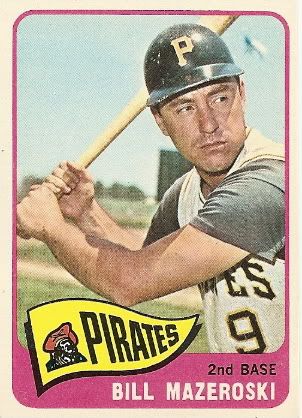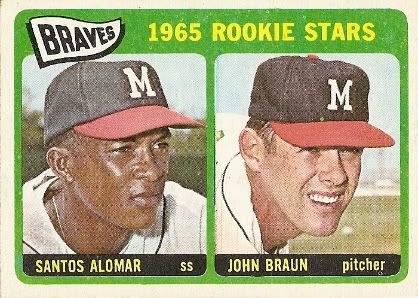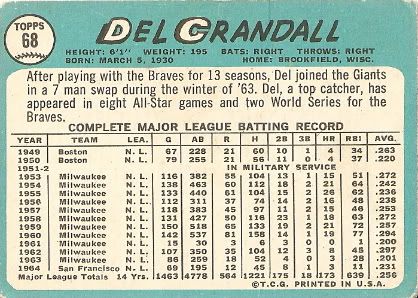
What does an NL MVP award and two big home runs in the World Series get you? If you're Ken Boyer, it gets you choice hero numbering. Do you think Ken was aware of this? Did he strut around the clubhouse in 1965, thumbing his nose at #320 Bob Gibson and #190 Bill White? "Look out boys, #100 comin' through!"
-Was something of a hometown boy. Born in Liberty, MO, in 1931 and signed with the Cardinals in 1949. He was signed as a pitcher, but proved so adept with the bat that he was soon shifted to third base.
-After two years of military service (1952-1953), Ken finally got the call to St. Louis in 1955. He showed good power (18 HR, 27 2B) with some speed (22 SB...and 17 CS!), but the best would come later.
-Won his first Gold Glove in 1958, and added four more before Ron Santo started snatching them up in the mid-1960's.
-Won his aforementioned MVP award with a .295 average, 30 2B, 10 3B, 24 HR, and career-high 119 RBI for the World Champion Redbirds in 1964. It was the third time that he had reached double figures in doubles, triples, and homers in a season. He may actually have been better in 1960 (.304, 32 HR) and 1961 (career-best .329 AVG).
-Ken was plagued by back problems late in his career, and spent time with the Mets, White Sox, and Dodgers before retiring in 1969. In fifteen seasons, he hit .287 with 282 HR and 1,141 RBI. He was the second third baseman to ever hit 250 home runs (Eddie Mathews being the first).
-Ken died of lung cancer in 1982, at the age of 51. Two years later, the Cards retired his #14. He's the only Cardinal player to receive this honor who is not enshrined in the Baseball Hall of Fame, though a very good argument can be made for both him and his contemporary Ron Santo.






















